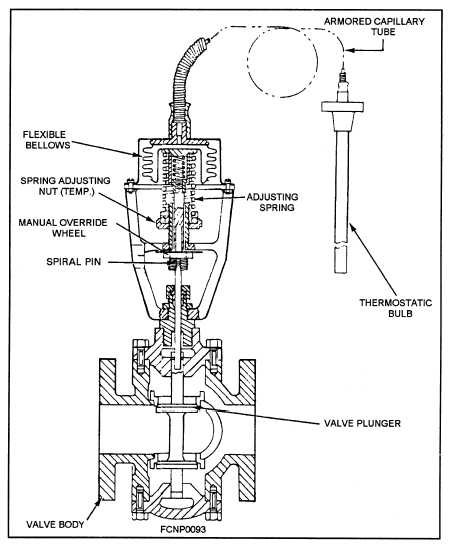turning the manual override wheel up or down. The
use of the manual override inhibits the thermostatic
assembly and should be used only when the thermo-
static assembly is inoperable. Corrective maintenance
of the regulating valve consists of inspecting the valve
for leaks and for freedom of stem movement, adjust-
ing the set point at which the valve regulates, renew-
ing the thermostatic assembly, and cleaning and
restoring valve parts. Any time that you remove a
valve, you should center punch a dot code on each
piece to ensure that the valve and the piping are
installed in the original configuration.
Individual maintenance manuals for temperature-
ample, if you remove the top of the thermostatic
assembly without chilling the temperature probe, the
bellows will expand and rupture, making the unit
worthless. To verify that the thermostatic assembly
has failed, close the valves upstream and downstream
of the thermostatic bulb, drain the unit below the loca-
tion of the bulb, and remove the bulb from its well.
Place the bulb in a suitable vessel and observe the
valve stroke while the bulb is alternately heated with
hot water and cooled with cold water. If the valve
thermostatic assembly does not respond, it has lost its
thermostatic charge, and anew unit must be installed.
Figure 2-11 shows a two-way temperature-regu-
regulating valves should be closely followed. For ex-
lating valve.
Figure 2-11.—Two-way temperature-regulating valve.
2-14


